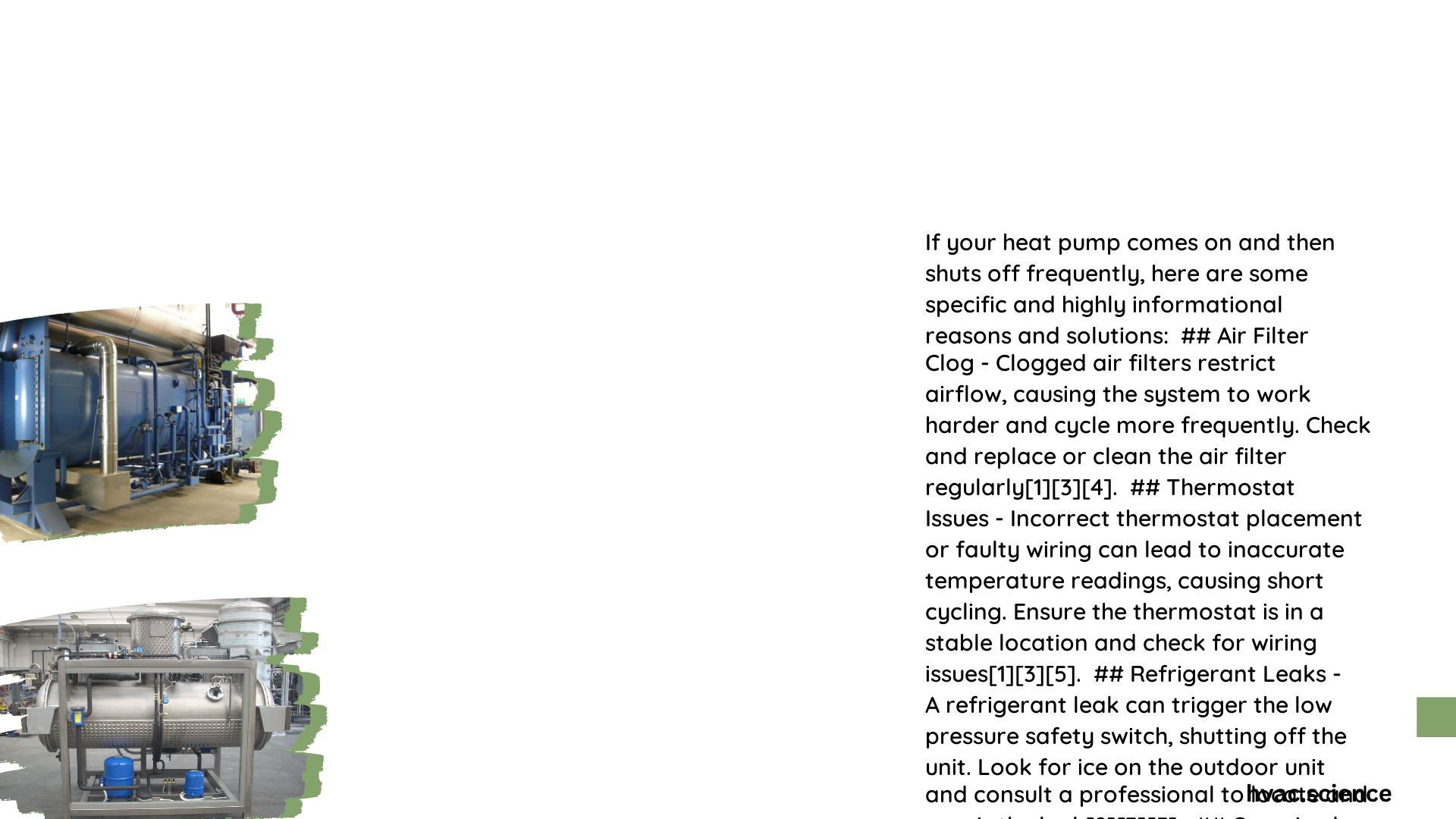A heat pump that comes on then shuts off quickly, known as short cycling, is a common issue that can lead to increased energy consumption, higher utility bills, and reduced system lifespan. This problem occurs when the heat pump runs for brief periods, often less than 10 minutes, before shutting down. Short cycling can be caused by various factors, including airflow issues, refrigerant problems, thermostat malfunctions, or incorrect unit sizing. Understanding the causes and solutions can help homeowners maintain an efficient and comfortable heating system.
Why Does My Heat Pump Keep Turning On and Off?
Short cycling in heat pumps can be attributed to several factors:
- Airflow Restrictions: Clogged air filters or blocked vents can cause the system to overheat and shut down prematurely.
- Refrigerant Issues: Low refrigerant levels or leaks can prevent proper heat transfer, leading to frequent cycling.
- Thermostat Problems: A faulty or poorly calibrated thermostat may send incorrect signals to the heat pump.
- Oversized Unit: An overly large heat pump can reach the set temperature too quickly, resulting in short cycles.
- Undersized Unit: A heat pump that’s too small for the space will struggle to maintain temperature, causing frequent cycling.
What Are the Specific Technical Causes of Heat Pump Short Cycling?

Airflow Issues
- A clogged air filter can reduce airflow by up to 50%, triggering premature shutdowns.
- Dirty outdoor units can impede heat exchange, causing the system to cycle off.
Refrigerant Problems
- Low refrigerant levels can prevent proper heat transfer, leading to inefficient operation.
- Refrigerant leaks can cause the system to lose pressure and shut down frequently.
Thermostat Malfunctions
- Incorrect calibration can cause the thermostat to signal on/off cycles every 5-10 minutes instead of the normal 15-20 minutes.
- Electrical issues in the thermostat can result in erratic temperature readings and frequent cycling.
Unit Sizing Issues
- An oversized unit may reach the set temperature too quickly, leading to short cycles.
- An undersized unit will run constantly, struggling to maintain the desired temperature.
How Can I Optimize My Thermostat Settings to Prevent Short Cycling?
To minimize short cycling, consider the following thermostat settings:
- Temperature Ranges:
- Heating: 68°F to 72°F
-
Cooling: 75°F to 78°F
-
Differential Settings:
- Set the differential to 1-2°F to prevent frequent cycling.
-
Example: If set to 70°F, the system turns on at 69°F and off at 71°F.
-
Programmable Features:
- Use schedules to adjust temperatures based on occupancy and time of day.
- Smart thermostats can learn patterns and optimize settings automatically.
What Are the Quantifiable Efficiency Problems Associated with Heat Pump Short Cycling?
Short cycling can significantly impact the efficiency and performance of your heat pump:
| Aspect | Impact of Short Cycling |
|---|---|
| Energy Consumption | Up to 50% increase |
| Monthly Energy Bills | $50 to $100 or more increase |
| System Lifespan | Reduction by 5-10 years |
- A normally functioning heat pump might consume 2 kWh per cycle, while short cycling could double this to 4 kWh per hour.
- The increased stress on components like the compressor and fan motor leads to premature wear and tear.
How Often Should I Perform Maintenance Checks on My Heat Pump?
Regular maintenance is crucial for preventing short cycling:
- Air Filters: Check and replace every 1-3 months.
- Outdoor Unit: Clean monthly to prevent debris accumulation.
- Professional Inspection: Schedule annual check-ups with an HVAC technician.
What Are the Key Components to Inspect During Troubleshooting?
When troubleshooting a short cycling heat pump, focus on these components:
- Air filter
- Refrigerant levels
- Thermostat functionality
- Outdoor unit condition
- Electrical connections
How Much Do Heat Pump Repairs or Adjustments Typically Cost?
Repair costs can vary based on the issue:
- Air filter replacement: $10-$30
- Thermostat repair/replacement: $100-$500
- Refrigerant leak repair: $200-$1,500
- Full system replacement (for incorrect sizing): $2,000-$10,000+
By understanding the causes of short cycling and implementing proper maintenance, you can ensure your heat pump operates efficiently and effectively, providing consistent comfort while minimizing energy costs.
References:
1. 4 Reasons Your Heat Pump is Short-Cycling
2. The Problem With A Short-Cycling Heat Pump
3. Why Short Cycling Is Harmful to Your Heat Pump
